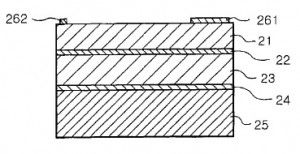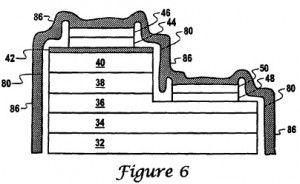In a previous post, I discussed the new LED patent dispute between Osram, Samsung and LG Electronics (LG). There were a few significant developments last month.
First, the U.S. International Trade Commission (ITC) decided to investigate allegations raised in two Osram complaints that Samsung and LG are infringing a number of Osram patents by importing certain LEDs into the U.S. According to the California complaint against LG (Osram-LG-Complaint) Osram’s conversion technologies, which enable production of white LEDs using blue-emitting semiconductors, are the subject of the asserted patents, and a host of LG flat-screen televisions contain infringing LEDs.
Also, Samsung and LG each responded with suits of their own in both the ITC and Delaware federal court in which they accuse Osram of patent infringement.
By my count, there are now at least 30 patents at issue in the several lawsuits filed by Osram, Samsung and LG -- and we’re still in the beginning stages of this growing LED patent war.
Samsung’s Delaware complaint (Samsung-Osram_Complaint) asserts eight patents, six relating to LED structure and two concerning methods of making LEDs.
U.S. Patents Nos. 7,268,372 and 7,893,443 are entitled, respectively, ”Vertical GaN light-emitting diode and method of manufacturing the same” and “Nitride-based semiconductor light-emitting device” and are directed to gallium nitride LEDs having particular layered structures.
U.S. Patent No. 7,282,741 (’741 Patent) is directed to a vertical type nitride LED wherein an n-side electrode comprises a bonding pad (261) formed adjacent to an edge of an upper surface of the n-type nitride semiconductor layer (21). An extended electrode (262) is formed in a band from the bonding pad (261).
According to the ’741 Patent, the bonding pad prevents a wire from shielding light emitted from the active layer of the LED, and the extended electrode prevents concentration of current density, thereby ensuring effective distribution of the current density.
The other patents asserted by Samsung in the Delaware lawsuit are:
U.S. Patent No. 7,959,312, entitled “White light emitting device and white light source module using the same” and directed to white LEDs having a blue LED chip with red and green phosphors disposed around it that emit light having certain color coordinates;
U.S. Patent No. 7,964,881, entitled “Semiconductor light emitting device, method of manufacturing the same, and semiconductor light emitting package using the same” and directed to an LED having an electrode layer with an area exposed by a contact hole formed through a first conductivity type semiconductor layer;
U.S. Patent No. 7,771,081, entitled “LED package and backlight unit using the same” and directed to an LED package having a simplified lens shape with an increased beam angle; and
U.S. Patents Nos. 6,551,848 and 7,838,315, relating to methods of manufacturing LEDs and vertical LEDs, respectively.
Samsung’s Delaware complaint lists Osram’s TOPLED, Dragon Family, and OSLON lines of products.
In its Delaware suit (LG-Osram_Complaint), LG asserts eight patents against Osram. Like the patents asserted by Osram against Samsung and LG, many of these LG patents relate to technology for converting blue LED light into white light.
Three related patents -- U.S. Patents Nos. 6,841,802, 7,649,210 and 7,956,364 -- entitled “Thin film light emitting diode,” are directed to an LED comprising an LED chip (30) emitting blue light, a thin film layer (86) over the LED chip, and a passivation layer (80) between the thin film layer and the LED chip.
The thin film layer (86) contains a fluorescent material such as phosphor or a compound containing tin and converts the blue light to white light.
The other LG patents include:
U.S. Patent No. 7,821,024, entitled “Semiconductor light emitting device having a roughness layer” and directed to an LED wherein one of the conductive semiconductor layers includes a “horn-shaped roughness” to change the incident angle of light emitted and enhance external quantum efficiency;
U.S. Patents Nos. 7,768,025 and 7,868,348, directed to LEDs having vertical topology and vertical structure, respectively, to improve luminous efficiency and reliability;
U.S. Patent No. 7,884,388, entitled “Light emitting diode having a first GaN layer and first semiconductor layer each having a predetermined thickness and fabrication method thereof”; and
U.S. Patent No. 7,928,465, entitled “Method of fabricating vertical structure LEDs” and directed to methods of making GaN LEDs on insulating substrates.
***
Eric Lane is a patent attorney at Luce, Forward, Hamilton & Scripps in San Diego, where he works in the Intellectual Property and Climate Change & Clean Technologies practice groups. Mr. Lane can be reached at or at [email protected]. He authors the Green Patent Blog. His new book -- Clean Tech Intellectual Property: Eco-Marks, Green Patents and Green Innovation -- is on sale now.





